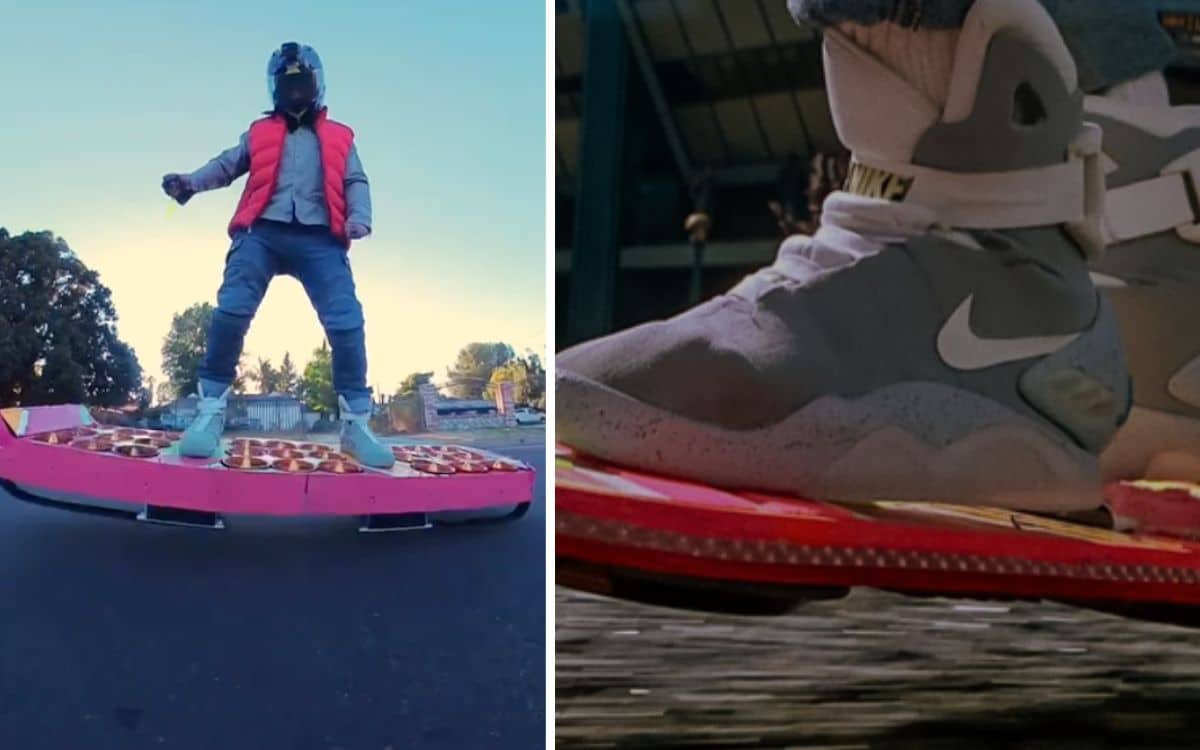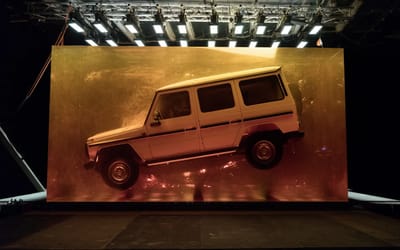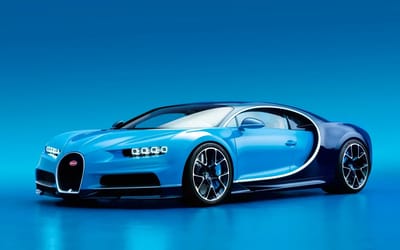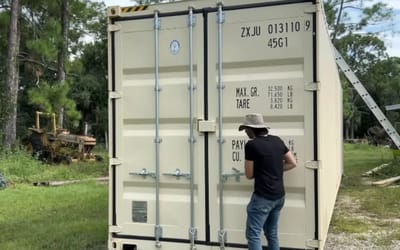YouTuber builds ‘Back to the Future’ style hoverboard that floats on absolutely everything
- YouTuber, JLaservideo, was inspired by Back to the Future to build a hoverboard.
- After many tests he decided using ‘the grounding effect’ would be best
- The results were surprisingly good
Published on Nov 30, 2023 at 9:52 PM (UTC+4)
by Amelia Jean Hershman-Jones
Last updated on Dec 04, 2023 at 3:00 PM (UTC+4)
Edited by
Amelia Jean Hershman-Jones
This Back to the Future inspired hoverboard actually floats above the ground.
Built by YouTuber, JLaservideo, it floats using a physical property known as ‘the grounding effect’.
He first tested the effects of an air compressor, magnetic levitation, electromagnets, superconductors, spinning magnets and air pressure from sound waves.
READ MORE! These are the craziest, most expensive jets, mansions and yachts Jeff Bezos owns
The conclusion: none of them would be practical.
Finally, he decides in the video that using air pressure is best.
Laser starts by attaching two air jets to a board to force air down.
A skirt underneath traps the air and forms a cushion to ride on but with the skirt on the ground it doesn’t look as. “magical”.
Helium could be used but you need a lot.
Meanwhile a gas heavier than air (like SF6) in a layer can be floated on like water – but it’s impractical.
Enter: the ground effect.
Used by some low-flying aircraft, it uses air bouncing off the ground to make an air cushion.


Being this low reduces drag or turbulence.
The ground effect works on a gradient with the strongest working at about half the wingspan.
Go further than this and it loses that force and falls.
This natural feedback loop keeps the craft locked at a certain height.
While wings would make the hovercraft an airplane, Laser believes he can use blades in the same way.
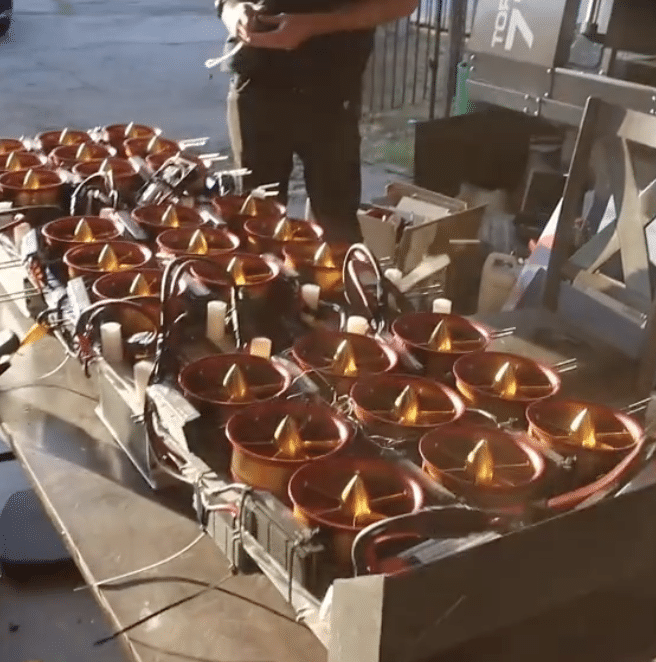
An initial prototype lifts off the ground and floats – but won’t bear weight.
Electrical duct fans (EDFs) were the answer.
Using the ground effect, motors put out 7% more thrust for the same amount of power.
The board progressed to having three boards of 3×3 EDFs.
Another test revealed controlling the EDFs was the problem with the front more powerful than the back (due to some of them being backwards).
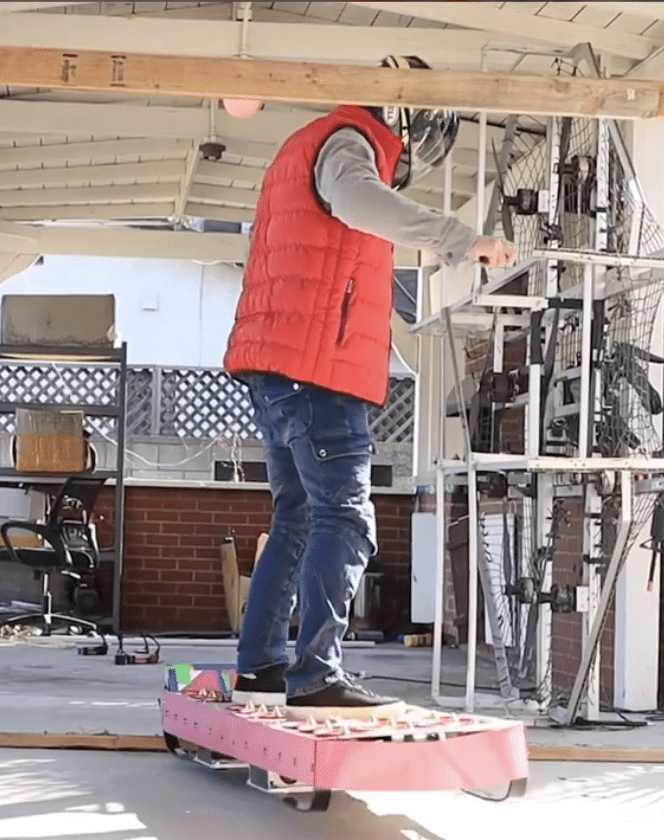
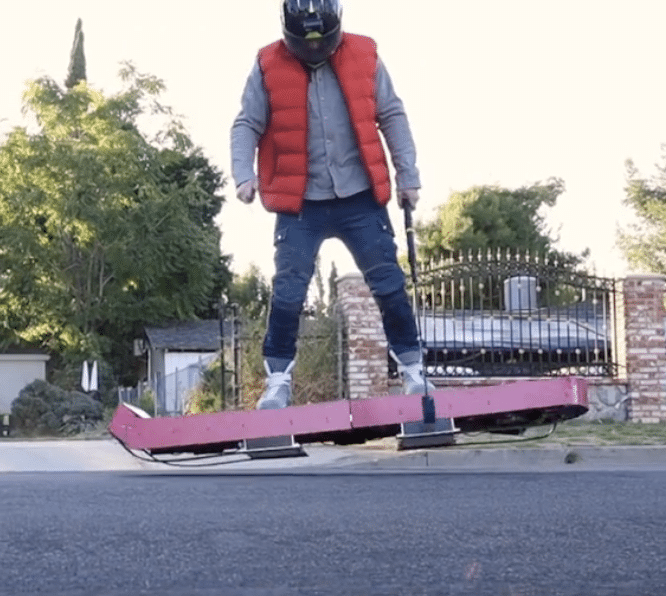
Just like this guy, who gave up his job to create a hoverbike, Laser seemed devoted to the cause.
A hoverbike was later unveiled at the Detroit Air Show.
A whole year of tweaks, testing and squashing bugs left Laser worried.
Too little power would have no effect, while too much would send him skyward.
After all, hovercraft racing is considered an extreme sport.
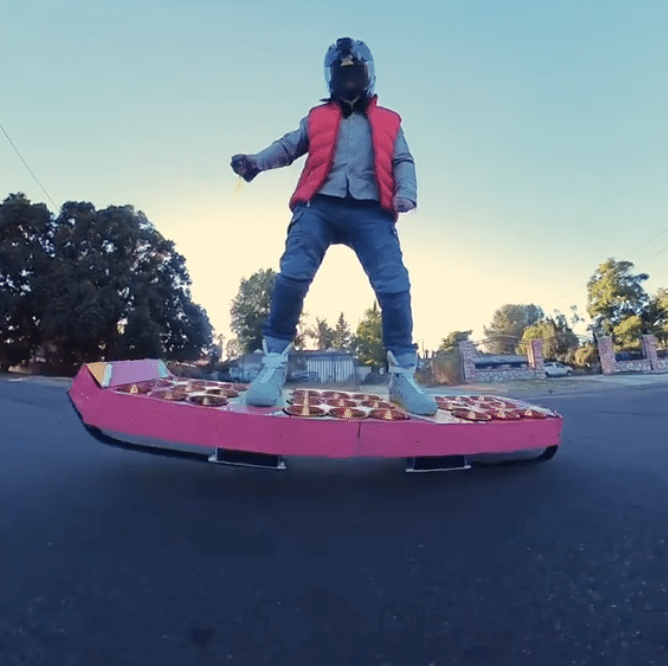
Eventually the team believed they’d found their ground-effect sweet spot for thrust – and it worked.
While it was turbulent, with a bit of practice Laser was able to take off and land with no tether or holding on.
For his final test he wanted to perfect the Back to the Future outfit with built-in body armor and nitinol self-lacing trainers.
The nickel/titanium alloy remembers its shape to snap back into shape when a current is put through the laces.
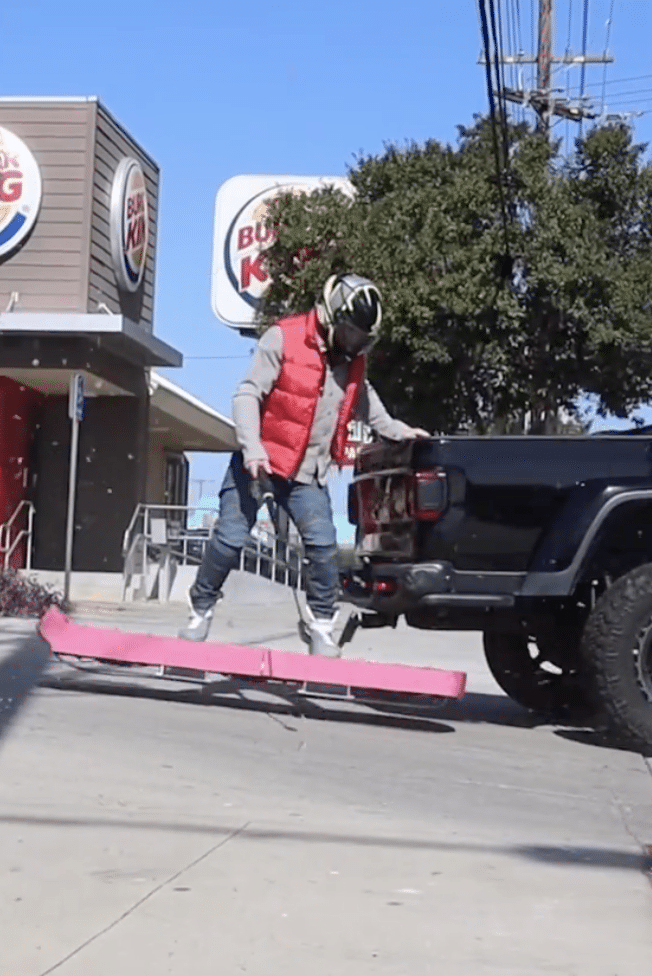


Visiting the location the movie was shot in is the final step to recreate scenes with surprising accuracy.
However the test didn’t go so well on water – just like in the movie.
And hovercrafts don’t come cheap with the $40,000 project flooded.
In fact, the Arosa is a $100,000 supercar that’s actually a hovercraft.
Back to the Future and the drawing board.
DISCOVER SBX CARS: The global premium car auction platform powered by Supercar Blondie
All Supercar Blondie contributors undergo editorial review and fact-checking to ensure accuracy and authority in automotive journalism. After gaining her BA Hons in French and English at the University of Nottingham, Amelia embarked on a vocational diploma from the National Council for the Training of Journalists (NCTJ). This led to numerous opportunities, from interning at Vogue to being on the small team that launched Women’s Health magazine in the UK, which was named the PPA Consumer magazine of the year for three years running. As Health, Beauty and Fitness editor, Amelia personally received a Johnson & Johnson Award and was shortlisted for both PPA and BSME titles. Since then, Amelia has created content for numerous titles and brands, including the Telegraph, 111 Skin, Waitrose, Red magazine, Stylist, and Elle, as well as being Head of Content at Vitality and Editor in Chief at INLondon magazine. “My superpower is translating technical jargon about the mechanical workings of a supercar into a relatable story you’ll want to share with your friends after you’ve read it.” After joining the SB Media family as a senior journalist in September of 2023, Amelia’s role has evolved to see her heading up the SEO output of the editorial team. From researching the most ‘Google-able’ key terms to producing evergreen content - it’s been a time of hard work, growth, and success for the editorial team and the Supercar Blondie website. “I like to think of myself as a ‘method journalist’. In other words: I live and breathe whatever I am writing about. When writing about fitness, I trained as a personal trainer, and as a beauty editor, I completed an ‘expert’ in scent diploma with the Fragrance Foundation. “During my tenure at Supercar Blondie, however, I did something I never thought possible: I passed my driving test at the age of 36. One day I’d love to train as a mechanic to better understand what happens under the hood, too. “My sweet spot is providing readers with a ‘takeaway’ (read: something new they didn’t know before) after reading every one of my stories. While I don’t claim to be an expert in the automotive world, I know the experts and bodies in the field to rely on to provide our readers with an informative and thought-provoking story every time they visit the site.”
